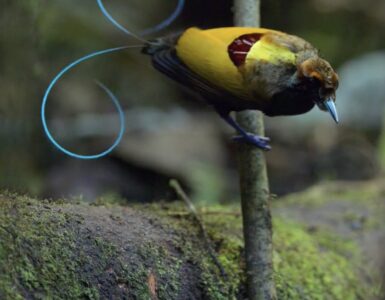Have you seen one of the greatest and most influential films in cinematic history, “The Good, the Bad and the Ugly,” released in 1966? The film is set during the American Civil War and follows three gunslingers searching for a buried treasure of gold coins. The movie is celebrated for its storytelling and captivating visuals as it takes the characters through the harsh and desolate landscapes of the American Southwest.
The American Southwest is characterized by vast desert landscapes, including iconic deserts such as the Sonoran Desert, Mojave Desert, and Chihuahuan Desert. These areas feature unique geological formations, rock formations, and the iconic saguaro cactus.
The Saguaro cactus is a tall cactus plant with branches that extend upward; the figure seems to be another character in the movie.
Cacti are often used in films to evoke a sense of the American Southwest or arid environments, contributing to the visual storytelling and atmosphere of the movie. However, the cactus is often associated with their thorns and prickly characteristics, which are not particularly appreciated by humans.
The prickly characteristics of cacti are not there to cause physical harm to humans. Instead, the unique adaptations help them survive in harsh environments with limited water availability. These adaptations serve multiple purposes: protecting the cacti, reducing water loss, and deterring herbivores.
Cacti (singular: cactus) come from a family of succulent plants belonging to the Cactaceae family and exhibit a remarkable diversity of forms, sizes, and adaptations, with over 1,500 species recognized. Though native to the deserts of North and South America, they can be found in arid and semi-arid habitats worldwide.
It’s important to note that not all cactus plants have spines, and some species have less pronounced or even completely absent spines. The degree of prickliness can vary among different cactus species. Additionally, while spines are a common adaptation, some cacti have other types of defensive structures, such as glochids (tiny, barbed bristles) or tough outer skin, contributing to their overall resilience in harsh environments.
Let us know some of the characteristics of Cacti.
Characteristics of Cacti
Succulent Tissues: Cacti have fleshy, swollen stems that serve as water-storage organs. These stems are adapted to retain and store water for extended periods, allowing the plant to survive in arid conditions.
Reduced Leaves: Many cacti have modified leaves or no leaves at all. This reduces water loss through transpiration, a process in which water evaporates from the leaf surfaces. Instead, photosynthesis primarily occurs in the green stems.
Areoles: Cacti have specialized structures called areoles, which are small, round, cushion-like structures on the stems. Areoles are where spines, flowers, and, in some cases, new stems (pads) emerge.
Spines: Cacti are known for their spines, modified leaves, or stipules. Spines serve multiple functions, including protection from herbivores, reducing water loss by providing shade and helping to regulate temperature.
The prickly nature of cacti deters herbivores from grazing on them. The spines can cause physical harm, making it less appealing for animals to consume cacti, especially when alternative food sources are available.
Shallow Roots: Cacti often have shallow but extensive root systems that can quickly absorb water from rainfall or dew.
Flowers: Cacti produce vibrant and often showy flowers. These flowers are adapted for pollination by specific pollinators, such as insects, birds, or bats. The timing of flowering is often tied to environmental factors like temperature and moisture.
Adaptations to Extreme Temperatures: Cacti have various adaptations to survive extreme temperatures, from intense heat during the day to cold temperatures at night. Some cacti have a unique form of photosynthesis called Crassulacean Acid Metabolism (CAM), which allows them to open their stomata at night to reduce water loss.
Saguaro cactus


As mentioned above, the most famous cactus plant is likely the Saguaro cactus (Carnegiea gigantea), known for its iconic appearance in famous movies. The Saguaro cactus is recognized for its tall, columnar shape with branches (arms) that extend upward.
Mature saguaros can reach heights of up to 40 feet (12 meters) or more. It might take several decades to reach this height, and they typically start growing arms when they are about 50 to 75 years old, thus making them extremely special.
The Saguaro cactus also produces large, white flowers in late spring to early summer, which open during the cooler evening hours and are pollinated by bats and moths. The Saguaro cactus is often featured in artwork, literature, and popular culture.
Due to its cultural and ecological significance, the Saguaro cactus is protected by laws in the United States.
Significance of Cactus Plants
Cactus is not just a significant part of many movies but is also important in various aspects, contributing to the environment, human well-being, and ecosystems.
Here are some key points highlighting the importance of cactus plants.
Adaptability to Harsh Environments
Cactus plants are well-adapted to survive in arid and desert environments where water is scarce. Their ability to store water in their thick, fleshy stems allows them to withstand prolonged water scarcity and drought periods.
Water Storage
Cacti have thick, fleshy, swollen stems that serve as water-storage organs. These stems are adapted to retain and store water for extended periods, enabling them to survive without water.
The saguaro cactus can hold more than 3,500 liters of water, which it can utilize during dry times to grow and produce flowers and seeds. The cactus won’t need to absorb water for an entire year when fully loaded.
This makes Cacti well-adapted to arid and desert environments where water is scarce. As mentioned, they are commonly associated with the American Southwest but can be found throughout other parts of the USA and many other regions in countries like Mexico, Spain, Chile, Argentina, etc., where water is limited.
Soil Management and Erosion Control
Another significance of cactus plants is that extensive root systems of some cacti help prevent soil erosion. Their roots stabilize the soil, making them useful in areas where wind and water erosion are common problems.
An example is the Organ Pipe Cactus, which has extensive and shallow root systems. These roots help stabilize the soil by anchoring it and preventing erosion caused by wind and water.
In some cases, cacti contribute to the development of biological soil crusts. These crusts, formed by a community of microorganisms, stabilize the soil surface and improve water retention.
Support Biodiversity
Cacti are essential components of the food web, providing sustenance and habitat in environments where resources can be scarce.
The unique features of cacti, such as water storage, flowering, and fruit production, make them important resources for the survival of numerous species. Cacti also provide habitats for various wildlife species.
Birds like white-winged doves and Gila woodpeckers consume cactus fruits and help distribute seeds in the environment. Some species of Bats and various insects, including bees, butterflies, and moths, rely on cactus flowers for nectar. Desert tortoises in North America, such as the Sonoran Desert tortoise, may consume cactus pads as part of their diet.
Food Source
Some species of cactus plants produce edible and nutritional fruits, which are a valuable food source for wildlife and humans in certain regions.
Prickly pear fruits, widely grown in America, have a long history of culinary use in traditional dishes of Mexican, Southwestern U.S., and Mediterranean cuisines. Prickly pear cacti, also known as nopal or opuntia, have been introduced to other parts of the world with suitable climates. Prickly pear fruits are consumed fresh and used in jams, jellies, and beverages.
Medicinal Uses
Certain cactus species, like the aloe vera plant, have medicinal properties. Aloe vera gel, obtained from the leaves, is known for its healing and soothing effects on the skin.
As per the ancient Indian system of medicine (Ayurveda), aloe vera has a long history of being used for various therapeutic purposes. Aloe Vera is mentioned in Ayurveda for its potential detoxifying properties and for balancing disorders in the body.
Sustainable Fashion
Cactus is also emerging as the latest innovation in sustainable fashion in the form of cactus leather. This vegan leather is made from the nopal cactus leaves, the same cactus that gives prickly pears. The eco-friendly cactus leather can make clothing, accessories, furniture, and car seating.
Ornamental Value


Many cactus plants are well-suited for indoor cultivation, making them popular choices as houseplants. These indoor cacti are usually smaller, have interesting shapes and colors, and require less sunlight than their outdoor counterparts.
Christmas Cactus, Easter Cactus, Moon Cactus, Ball Cactus, Fishbone Cactus, and Aloe Vera are easy-to-maintain cactus plants people keep at home.
Symbolic Significance
Finally, the symbolic significance of cactus plants is often used as a symbol of resilience, strength, and endurance due to their ability to survive in challenging conditions.
This symbolism is reflected in various movies and is sometimes associated with thriving despite adversity. Imagine the rugged looks of Clint Eastwood with a backdrop that shows a Saguaro cactus.
Wrapping Up
Cactus plants are also being extensively researched, as studying their unique adaptations can provide valuable insights into plant physiology, ecology, and adaptation strategies. In the current times, when water is increasingly becoming scarce, and many regions are getting dry, this research is essential for understanding and conserving diverse ecosystems.
The significance of cactus plants may vary depending on the specific species and the ecosystem in which they are found. Their presence can significantly impact the ecosystem’s health and diversity, making them essential for conservation efforts.
Watch the video to get a visual perspective on the significance of cactus plants.






Add comment